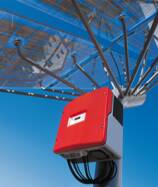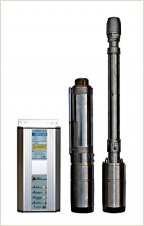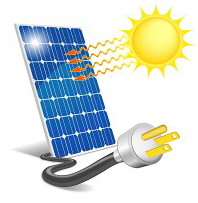Calculation for solar electrification
Panels, bateries, regulators, APS
How solar photovoltaic electrification works?
How solar photovoltaic electrification works?
CI
4
1
1
1
15
10
60
48
4
4
2
24
Wh / day
240
40
120
1.152
1.552
60
10
60
48
Total =
Example D: "Bigger country house"
4 lamps, 1 radio, 1 television, 1 cooler
Quantity
A
Equipment
B
Power
W
C
Power
W Subtotal
D = (A x C)
Hours / day
de usage
E
Energy
Wh
F= (D x E)
Energysav. lamps
Radiocassette
Television
Cooler
Paneles solares en La Capilla del Hombre
1.552
385
4,0
130
0,86
1,72
3,45
2400 - 3600 US$
400 - 1600 US$
160 - 300 US$
800 - 2000 US$
0 US$
3760 - 7500 US$
Modular System
The solar panels and batteries are moduls, that means that they arecompatible, and that you could beginn with less panels (if you haven´t got the money). Of course you don´t generate sufficent energy to run your refrigerator all night, but menwhile you got cold drinks i the daytime.
When you have safed sufficient money, you can install more panels, becuase they are moduls.
The equipment which you need to buy with a "future vision" is the invertor or APS, because you can´t conect two inverters in paralel (to the same grid). View also Sostainability.
The daily average consumtion is:
1 panel of 110 W produces with 3,5 hours sun/day:
For the energy generation you need:
You have to store (12 V system) la quantity of:
You need the quantity of stationary bateries 12 V 150 Ah (without reserve):
You need the quantity of stationary bateries 12 V 150 Ah (with a 1 day* reserve):
You need the quantity of stationary bateries 12 V 150 Ah (with a 3 days* reserve):
Calculation of panels y bateries
The average daily sunshine hours could be found in tables for your region.
You multiply the panelpower 110 W with the average daily sunhours 3,5 h/d = 385 Wh/d.
You divide your daily energy needs 1552 Wh/d by your daily panel energy 385 Wh/d = 4 panels.
You divide your daily energy needs 1552 Wh/d by your system voltage 12 V = 130 Ah battery capacity.
You divide your needed battery capacity 130 Ah by the capacity of one battery 150 Ah = 0,86 batteries.
You multiply the quantity of batteries with the reserve factor 2 for 1 day of reserve = 1,72 batteries.
You multiply the quantity of batteries with the reservefactor 4 for 3 days of reserve = 3,45 batteries.
Wh/d
Wh/d
Paneles
Ah
Bateries
Bateries
Bateries
* Reserve of the solar system
The reserve of the solar system is calculated on the base of your geografical position: There are places where it rains during three or four days consecuently, so you need a minmum reserve of three days.
It also depends if the service of the system has to be garantized, like for example in comunications, medical equipment, etc..
We recomend to increase step by step the instaled bateries, view also Sostainability.
4 fotovoltaic solar panel of 110 W costs aproximately between:
4 stationary battery** of 12 V 150 Ah costs more or less:
1 regulator (protector of the battery) of 12 V 30 A costs more or less:
1 inverter APS of 1000 W 110 V AC costs between:
(The APS transforms the direct current DC in AC,so you can connect any (small) normal equipment for 110 V AC)
We don´t calculate instalation costs, because it´s easy to install:
Total of investment for this system is between:
Cost of the system
** Life expectancy of accumulators
There are different types of stationary accumulators or batteries with different plates and electrolites:
low mantainance, open.
free mantainance with valves.
free mantainance with gel.
other special types .
Average life expectancy of accumulators depending of the model and trademark:
5 to 6 years
4 to 5 years
10 to 30 years
.........
*** View also tecnical details in batteries or accumulators.
Life expectancy of solar panels
There are different tipes of solar panels different materials of cells and qualities:
Life expectancy of the best solar panel trademarks are between 25 and 30 years. Please review the especifications of each trademark and model.
Calculations for solar electrification
Solar electric systems independent and GRID injection (electrical network). Backup and protection of medical and computer equipment, radio communication, electric fences, cogeneration together with electro-thermal generators, air conditioning, etc.
Photovoltaic water pump systems that do not require batteries so the return on investment is very fast. These systems work fully automatic.



